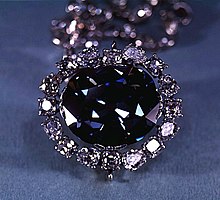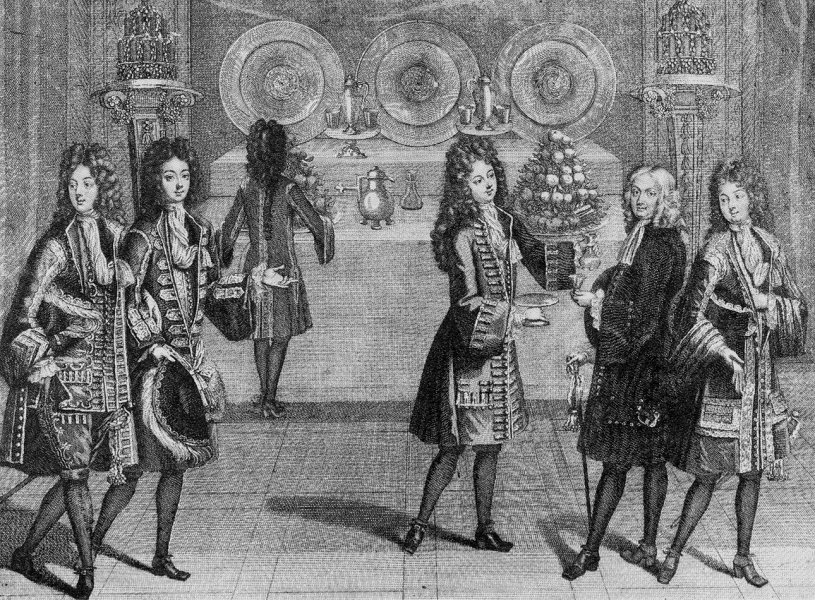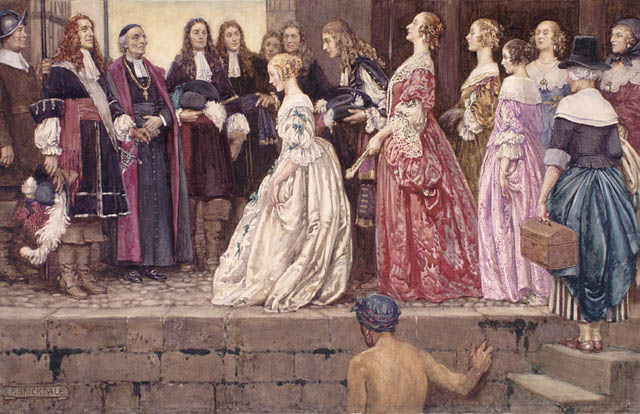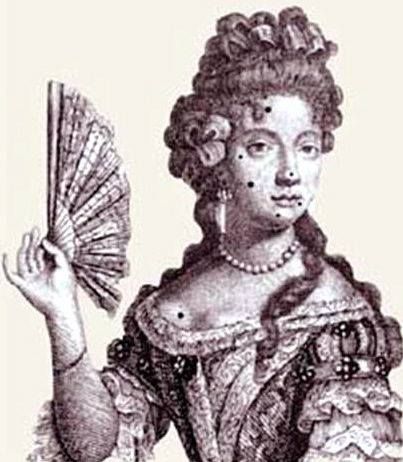Le diamant bleu de la Couronne de France
What is a King without bling? Louis XIV was not a fan of wearing tons of it, but he certainly was an avid collector of all things sparkling, his favourites being diamonds. One of his special treasures is known under various names: Le Bijou du Roi, le bleu de France, le Violet de France, le Tavernier Blue…. You might know it as the Hope Diamond. The one with the curse.

Legend has it, the diamond was stolen from a statue of the Goddess Sītā, but it actually comes from the Kollur mine in what was then part of the Golconda kingdom and is now India. It is unclear who discovered the stone, but it is known that Monsieur Jean-Baptiste Tavernier, a gem merchant and traveller, acquired the stone in during one of his voyages there between 1640 and 1667.
Monsieur Tavernier brought the large diamond, weighting between 115 and 112.23 carats, to Paris and it became known as the Tavernier Blue. When it changed into the hands of Louis XIV is not entirely clear, as there are various reports on the matter and of Monsieur Tavernier selling diamonds to the Sun King.
It must have changed into the King’s possession before 1678, for Louis XIV commissioned his court jeweller, Sieur Pitau, to re-cut the blue diamond. Afterwards, the royal inventories list the Tavernier Blue as Diamant bleu de la Couronne de France and Louis XIV had it set on a cravat-pin. According to one report, Louis XIV ordered Pitau to “make him a piece to remember” and Pitau took two years to finish his work, resulting in a “triangular-shaped 69-carat gem the size of a pigeon’s egg that took the breath away as it snared the light, reflecting it back in bluish-grey rays.” It was set in gold and supported by a ribbon for the neck which was worn by the Sun King during ceremonies.
After the demise of the Sun King in 1715, great-grandson Louis XV ordered the diamond to be set into an elaborate jewelled pendant for the ordre de la Toison d’or -Order of the Golden Fleece- in 1749. The work was done by court jeweller André Jacquemin and the assembled piece included a red spinel of 107 carats, shaped as a dragon breathing “covetous flames“, as well as 83 red-painted diamonds and 112 yellow-painted diamonds to suggest a fleece shape.
Following the death of Louis XV, the diamond fell into disuse. Although Marie-Antoinette was rather fond of bling, and used many of the French Crown Jewels for personal adornment or had them placed in new settings, she did not touch this one. It remained in its setting and was only briefly removed in 1797 for scientific study…. then vanished a couple of years later.
As Louis XVI and his family were imprisoned in the Temple in the early stages of the Reign of Terror during the French Revolution, a group of thieves broke into the Royal Storehouse, the Hôtel du Garde-Meuble de la Couronne, and stole most of the Crown Jewels during a five-day looting spree between September 11 and 16 in 1792. Almost all of the French Crown Jewels were stolen, 9,000 gems worth the equivalent of seven tons of gold. Although many of the stolen items were later recovered, there was no clue what happened to the rest… and among that rest was the large blue diamond of Louis XIV.
It appears that the diamond was swiftly smuggled out of the country and brought to London, where it was probably re-cut some time later to create two diamonds, of which the larger one is now known as the Hope Diamond. One report suggests that the cut was a “butchered job” because it sheared off 23.5 carats from the larger rock as well as hurting its “extraordinary lustre.”

For a long time it was believed that the Hope Diamond had been cut from the French Bleu, but there was no proof. Until a three-dimensional leaden model of the latter was rediscovered in the archives of the National Museum of Natural History in Paris in 2005. Previously, the dimensions of the French Bleu had been known only from two drawings made in 1749 and 1789. Although the model slightly differs from the drawings in some details, these details are identical to features of the Hope Diamond, allowing CAD technology to digitally reconstruct the French Blue around the re-cut stone.
The diamond appeared again in the records in 1812, almost exactly twenty years after the theft, just as the statute of limitations for the crime had taken effect. It was listed to be among the belongings of the London diamond merchant Daniel Eliason and seems to have moved into royal hands afterwards. Although there is no record of ownership in the Royal Archives at Windsor, it seems the diamond was in possession of George IV, evidence in form of contemporary writings and artwork suggests it. It seems Caroline of Brunswick acquired it and it might have been sold into private hands after George’s death.
A rich London banker named Thomas Hope then bought it for either $65,000 or $90,000. In 1839, the diamond appeared in a published catalog of the gem collection of Henry Philip Hope, who was a member of the same banking family. The stone was set in a fairly simple medallion surrounded by many smaller white diamonds, which he sometimes lent to Louisa de la Poer Beresford, the widow of his brother Thomas Hope, for society balls. It was then that the diamond became known as the Hope Diamond.
It remained in the possession of the family until it was sold to Adolph Weil, a London jewel merchant, for £29,000, £2.89 million today. Weil later sold the stone to the diamond dealer Simon Frankel, who took it to New York. Several owners later, it was donated to the National Museum of Natural History.
What about that famous curse? Legend has it that the diamond brings misfortune to its owner. The disgrace of Nicolas Fouquet and Madame de Montespan are due to them borrowing the stone to wear it. The curse was also the reason Louis XVI and Marie-Antoinette ended up sans heads and the reason for the gruesome fate of the Princesse de Lamballe. There are countless more tales like this, involving suicide, financial ruin and all sorts of misfortunes.
The first victim of the curse is said to be Tavernier, who brought the stone from India to Paris. It is said he has been “torn to pieces by wild dogs in Constantinople“…when he actually died in Moscow in 1689, at the age of eighty-four.



